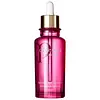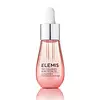What's inside
What's inside
 Key Ingredients
Key Ingredients

 Benefits
Benefits

 Concerns
Concerns

 Ingredients Side-by-side
Ingredients Side-by-side

Water
Skin ConditioningGlycerin
HumectantMethyl Gluceth-10
EmulsifyingDipropylene Glycol
HumectantButylene Glycol
HumectantPEG-8
HumectantPEG/PPG-14/7 Dimethyl Ether
Skin ConditioningPPG-13-Decyltetradeceth-24
EmulsifyingTrehalose
HumectantPhenoxyethanol
PreservativePEG-20
HumectantParfum
MaskingPhytosteryl/Octyldodecyl Lauroyl Glutamate
Skin ConditioningTocopheryl Acetate
AntioxidantSodium Citrate
BufferingDipotassium Glycyrrhizate
HumectantPolyquaternium-51
Skin ConditioningCitric Acid
BufferingButylphenyl Methylpropional
PerfumingLimonene
PerfumingDisodium EDTA
Ascorbyl Tetraisopalmitate
AntioxidantSodium Acetylated Hyaluronate
HumectantOryza Sativa Germ Oil
EmollientRosa Canina Fruit Oil
EmollientCamellia Japonica Seed Oil
EmollientMortierella Oil
Skin ConditioningHexyl Cinnamal
PerfumingCitronellol
PerfumingLinalool
PerfumingAlpha-Isomethyl Ionone
PerfumingBenzyl Alcohol
PerfumingPEG-30 Soy Sterol
EmulsifyingHydrolyzed Silk
HumectantHydrogenated Lecithin
EmulsifyingTocopherol
AntioxidantBupleurum Falcatum Root Extract
Skin ConditioningTrisodium EDTA
Theanine
EmollientHydrolyzed Conchiolin Protein
Skin ConditioningAscorbyl Dipalmitate
AntioxidantWater, Glycerin, Methyl Gluceth-10, Dipropylene Glycol, Butylene Glycol, PEG-8, PEG/PPG-14/7 Dimethyl Ether, PPG-13-Decyltetradeceth-24, Trehalose, Phenoxyethanol, PEG-20, Parfum, Phytosteryl/Octyldodecyl Lauroyl Glutamate, Tocopheryl Acetate, Sodium Citrate, Dipotassium Glycyrrhizate, Polyquaternium-51, Citric Acid, Butylphenyl Methylpropional, Limonene, Disodium EDTA, Ascorbyl Tetraisopalmitate, Sodium Acetylated Hyaluronate, Oryza Sativa Germ Oil, Rosa Canina Fruit Oil, Camellia Japonica Seed Oil, Mortierella Oil, Hexyl Cinnamal, Citronellol, Linalool, Alpha-Isomethyl Ionone, Benzyl Alcohol, PEG-30 Soy Sterol, Hydrolyzed Silk, Hydrogenated Lecithin, Tocopherol, Bupleurum Falcatum Root Extract, Trisodium EDTA, Theanine, Hydrolyzed Conchiolin Protein, Ascorbyl Dipalmitate
Caprylic/Capric Triglyceride
MaskingIsoamyl Cocoate
Coco-Caprylate
EmollientSimmondsia Chinensis Seed Oil
EmollientPrunus Amygdalus Dulcis Oil
Skin ConditioningParfum
MaskingCocos Nucifera Oil
MaskingOleic/Linoleic/Linolenic Polyglycerides
EmollientHelianthus Annuus Seed Oil
EmollientCitronellol
PerfumingGeraniol
PerfumingLaminaria Digitata Extract
Skin ProtectingRosa Canina Fruit Oil
EmollientCarthamus Tinctorius Seed Oil
MaskingTocopherol
AntioxidantBenzyl Salicylate
PerfumingRose Extract
Skin ConditioningSalicornia Herbacea Extract
Skin ConditioningPadina Pavonica Thallus Extract
Skin ConditioningPelargonium Graveolens Oil
MaskingRosa Damascena Flower Oil
MaskingRosa Damascena Extract
MaskingCaprylic/Capric Triglyceride, Isoamyl Cocoate, Coco-Caprylate, Simmondsia Chinensis Seed Oil, Prunus Amygdalus Dulcis Oil, Parfum, Cocos Nucifera Oil, Oleic/Linoleic/Linolenic Polyglycerides, Helianthus Annuus Seed Oil, Citronellol, Geraniol, Laminaria Digitata Extract, Rosa Canina Fruit Oil, Carthamus Tinctorius Seed Oil, Tocopherol, Benzyl Salicylate, Rose Extract, Salicornia Herbacea Extract, Padina Pavonica Thallus Extract, Pelargonium Graveolens Oil, Rosa Damascena Flower Oil, Rosa Damascena Extract
Ingredients Explained
These ingredients are found in both products.
Ingredients higher up in an ingredient list are typically present in a larger amount.
Citronellol is used to add fragrance/parfum to a product. It is often derived from plants such as roses. In fact, it can be found in many essential oils including geranium, lavender, neroli, and more. The scent of Citronellol is often described as "fresh, grassy, and citrus-like".
Since the Citronellol molecule is already unstable, Citronellol becomes irritating on the skin when exposed to air.
Citronellol is a modified terpene. Terpenes are unsaturated hydrocarbons found in plants. They make up the primary part of essential oils.
Citronellol is not able to be absorbed into deeper layers of the skin. It has low permeability,
Citronellol is also a natural insect repellent.
Learn more about CitronellolParfum is a catch-all term for an ingredient or more that is used to give a scent to products.
Also called "fragrance", this ingredient can be a blend of hundreds of chemicals or plant oils. This means every product with "fragrance" or "parfum" in the ingredients list is a different mixture.
For instance, Habanolide is a proprietary trade name for a specific aroma chemical. When used as a fragrance ingredient in cosmetics, most aroma chemicals fall under the broad labeling category of “FRAGRANCE” or “PARFUM” according to EU and US regulations.
The term 'parfum' or 'fragrance' is not regulated in many countries. In many cases, it is up to the brand to define this term.
For instance, many brands choose to label themselves as "fragrance-free" because they are not using synthetic fragrances. However, their products may still contain ingredients such as essential oils that are considered a fragrance by INCI standards.
One example is Calendula flower extract. Calendula is an essential oil that still imparts a scent or 'fragrance'.
Depending on the blend, the ingredients in the mixture can cause allergies and sensitivities on the skin. Some ingredients that are known EU allergens include linalool and citronellol.
Parfum can also be used to mask or cover an unpleasant scent.
The bottom line is: not all fragrances/parfum/ingredients are created equally. If you are worried about fragrances, we recommend taking a closer look at an ingredient. And of course, we always recommend speaking with a professional.
Learn more about ParfumRosehip Oil is a non-fragrant plant oil. Rosehips are a fruit from a rose bush and are edible. This oil has skin conditioning and hydrating properties.
Rosehip contains Vitamin C, Vitamin E, fatty acids and linolenic acids. These nourish your skin barrier. Having hydrated skin may help reduce the appearance of fine-lines and wrinkles.
Another great component of Rosehip Oil is Vitamin A, or retinol. Vitamin A encourages your skin to create more collagen.
Rosehip oil may help with reducing pigmentation. The lycopene and beta-carotene have skin-lightening properties. However, more studies are needed to confirm this.
Learn more about Rosa Canina Fruit OilTocopherol (also known as Vitamin E) is a common antioxidant used to help protect the skin from free-radicals and strengthen the skin barrier. It's also fat soluble - this means our skin is great at absorbing it.
Vitamin E also helps keep your natural skin lipids healthy. Your lipid skin barrier naturally consists of lipids, ceramides, and fatty acids. Vitamin E offers extra protection for your skin’s lipid barrier, keeping your skin healthy and nourished.
Another benefit is a bit of UV protection. Vitamin E helps reduce the damage caused by UVB rays. (It should not replace your sunscreen). Combining it with Vitamin C can decrease sunburned cells and hyperpigmentation after UV exposure.
You might have noticed Vitamin E + C often paired together. This is because it is great at stabilizing Vitamin C. Using the two together helps increase the effectiveness of both ingredients.
There are often claims that Vitamin E can reduce/prevent scarring, but these claims haven't been confirmed by scientific research.
Learn more about Tocopherol